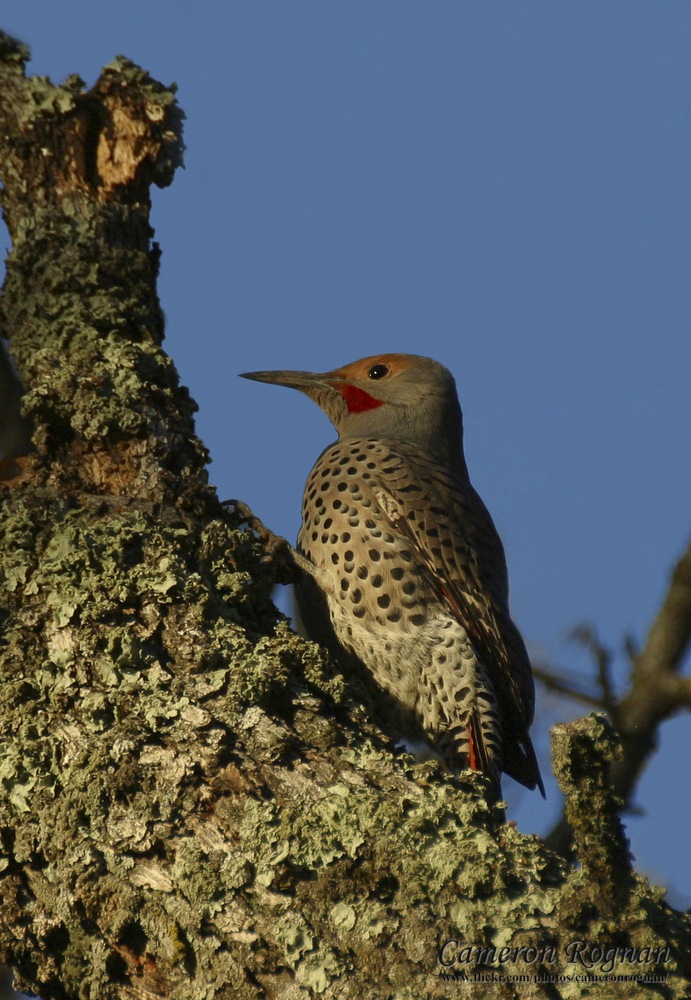Northern Flicker
(Colaptes auratus )
These nongame birds occur at all elevations. Open or lightly wooded ground is critical for feeding and and nesting. Their diet consists of ants, other insects, fruits, and berries. They are often seen foraging on the ground. Nest holes are excavated in dead trees or limbs. Cottonwoods and aspens are often utilized. Breeding begins in March and nesting occurs in May and June. Both parents incubate the eggs for 11-14 days. The young can fly at 25-28 days of age. The population trend of the northern flicker is stable.
